Table of Contents
There is no specific food that can prevent all illnesses, as the cause of different illnesses can vary. However, there are certain foods that can boost your immune system and help you stay healthy during the winter months. Here are a few ideas:
Citrus fruits
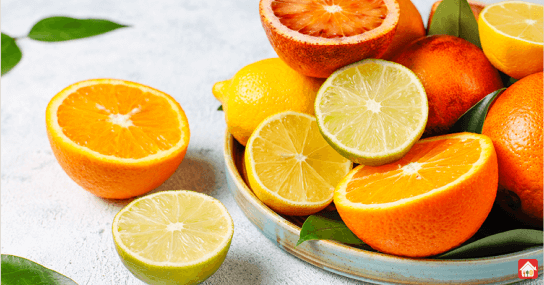
Oranges, lemons, and grapefruits are high in vitamin C, which can help support the immune system.
Citrus fruits are a type of fruit that is known for their bright colours and juicy, tart flavours. They are a popular choice for adding flavour and nutrition to meals and snacks, and they are often associated with winter due to their peak seasonality during this time of year. Some common citrus fruits that are available in the winter months include oranges, grapefruits, lemons, limes, and tangerines. These fruits can be enjoyed on their own, or used in a variety of dishes such as salads, marinades, and baked goods. In addition to being a tasty and refreshing treat, citrus fruits are also a good source of vitamin C, fibre, and other nutrients.
Garlic
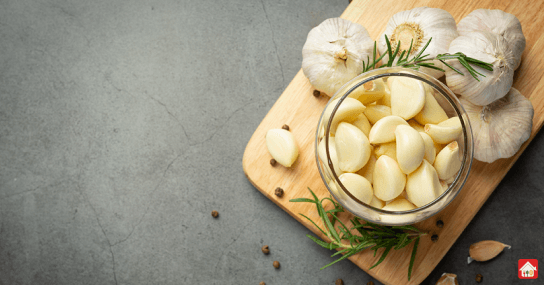
Garlic has antimicrobial properties and may help boost the immune system.
Garlic is a popular ingredient that is used in many different types of dishes. It is a member of the onion family and is known for its pungent, flavorful taste. Garlic is grown in many parts of the world, including during the winter months in some regions.
To grow garlic in the winter, you will need to start by planting garlic bulbs in the fall, around 4-6 weeks before the first hard frost. The bulbs should be planted in well-draining soil that is rich in organic matter. You will also need to ensure that the soil is moist and well-watered, as garlic requires a consistent supply of water to grow.
Once the garlic has been planted, it will begin to grow roots and produce new shoots. As the winter months progress, the garlic will continue to grow and develop. It is important to protect the garlic plants from extreme cold and frost, as this can damage or kill the plants. Covering the plants with a layer of mulch or straw can help to insulate them and keep them warm.
If you are growing garlic in a colder climate, it may be necessary to provide additional heat and protection to the plants in order to ensure that they survive the winter. This can be done by using cold frames or greenhouses, or by covering the plants with blankets or other materials to keep them warm.
Overall, growing garlic in the winter requires a bit of extra care and attention, but the reward of harvesting fresh, flavorful garlic during the cold months is well worth the effort.
Ginger
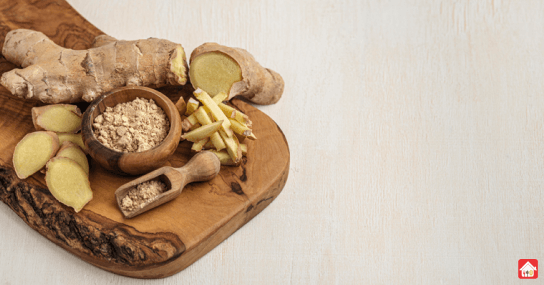
Ginger has anti-inflammatory properties and may help reduce the severity of colds and other respiratory infections.
Ginger is a root that is commonly used in cooking and has a warm, spicy flavour. It is often used in winter dishes, such as gingerbread, to add warmth and depth of flavour. It is also commonly used in traditional remedies to help soothe digestive issues and alleviate cold and flu symptoms. To use ginger in the winter, you can purchase fresh ginger root and peel and chop it before adding it to your dishes. You can also purchase dried ginger or ginger powder, which can be stored for longer periods of time and used as needed. Some people also like to drink ginger tea in the winter as a warm beverage. To make ginger tea, you can slice a piece of fresh ginger and steep it in hot water for a few minutes before drinking. You can also add honey or lemon to the tea for added flavour and potential health benefits.
Spinach
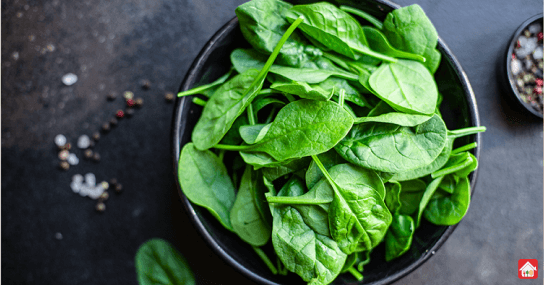
Spinach is high in vitamins A and C, which can help support the immune system.
Spinach is a leafy green vegetable that is generally considered a cool-season crop. It can be grown in the winter in many areas, although it may be more challenging due to shorter days and cooler temperatures. In order to grow spinach during the winter months, you may need to take some additional steps to protect the plants from cold temperatures and frost.
Almonds

Almonds are a good source of vitamin E, which has immune-boosting properties.
Almonds are a type of tree nut that is commonly available year-round in many parts of the world. They are a popular snack and are also used in a variety of dishes and recipes, including baked goods, salads, and main courses. Almonds are a good source of nutrients, including fibre, protein, and healthy fats, and have been associated with a number of potential health benefits.
In the winter months, almonds can be a convenient and nutritious snack to have on hand. They can be eaten on their own, or added to dishes and recipes for added flavour and nutrition. Almonds can also be a good source of warmth and energy during the colder months, as they are high in calories and provide a slow, sustained release of energy.
If you are interested in incorporating almonds into your winter diet, there are many ways to do so. You can eat them raw, roasted, or as almond butter, which can be spread on toast or mixed into smoothies. Almonds can also be used to add crunch and flavour to salads, oatmeal, and other dishes. Just be sure to pay attention to portion sizes, as almonds are high in calories and it’s important to maintain a healthy, balanced diet.
Turmeric
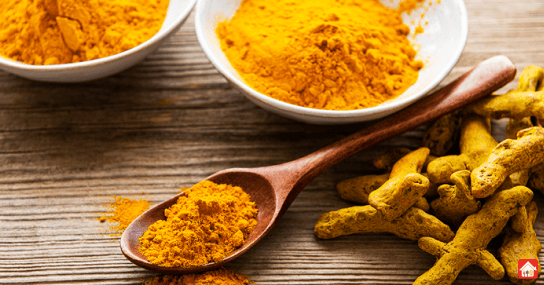
Turmeric has anti-inflammatory properties and may help support the immune system.
Sweet potatoes
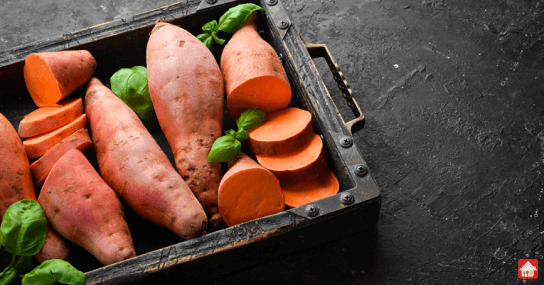
Sweet potatoes are high in vitamin A, which can help support the immune system.
Sweet potatoes are a type of root vegetable that is native to Central and South America. They are a popular food in many parts of the world, including the United States, and are often associated with winter dishes such as casseroles, pies, and soups.
Sweet potatoes are a good source of nutrients, including vitamin A, vitamin C, potassium, and fiber. They are also relatively low in calories and have a lower glycemic index than regular potatoes, which means that they can help to regulate blood sugar levels.
To store sweet potatoes in the winter, it is best to keep them in a cool, dry place with good ventilation. Avoid storing them in the refrigerator, as this can cause them to become hard and spoil more quickly. Sweet potatoes will typically keep for several weeks to a few months when stored in this way.
When preparing sweet potatoes, it is important to wash them well before cooking or peeling them. They can be baked, boiled, mashed, or roasted, and can be used in a variety of dishes such as soups, stews, pies, and casseroles. They can also be eaten as a side dish or as part of a main course.


